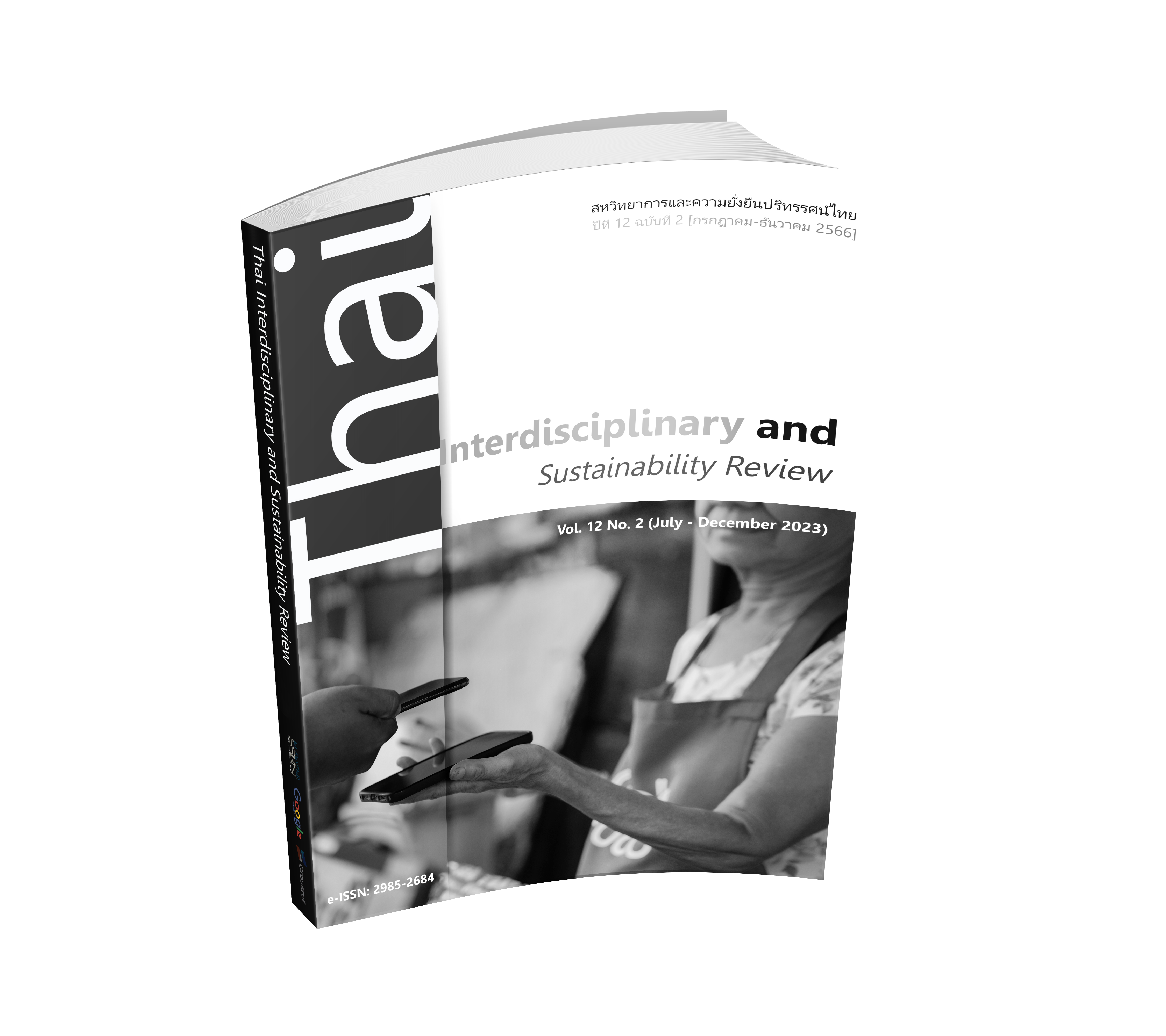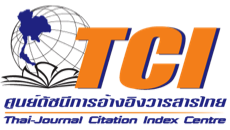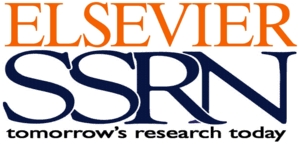EXECUTIVE FUNCTIONS COMPONENTS AND CHARACTERISTICS OF PRESCHOOL CHILDREN WITH AUTISM SPECTRUM DISORDER
DOI:
https://doi.org/10.14456/tisr.2023.4Keywords:
Executive Functions, Preschool Children, Autism Spectrum DisordersAbstract
This mixed method research aimed to examine executive functions components of preschool children with autism spectrum disorder (ASD). The research was divided into 2 phases. The first phase was a study of executive functions components from relevant documents and an interview of professionals. Theories and researches that related to the executive functions were reviewed. Moreover, the in-depth interview was conducted with 6 professionals, selected by a purposive sampling approach, who had experiences to improve the executive functions skills in children with ASD. Meanwhile, the second phase was a study of the executive functions characteristics of 200 preschool children with ASD, selected by a snowball sampling approach, who were treated at hospitals in Bangkok. The research was found that the executive functions components were consisted of 5 aspects: 1) Inhibitory Control, 2) Working Memory, 3) Cognitive Flexibility, 4) Emotional Control, and 5) Planning and Organization. In addition, the children with ASD showed low levels of executive functions because of social emotion deficits, communication deficits and repetitive behaviors.
Downloads
References
ฉันทิดา สนิทนราทร เวชมงคลกร. (2561). การพัฒนาโปรแกรมการเล่นบำบัดเพื่อเสริมสร้างทักษะการคิดเชิงบริหารของเด็กปฐมวัยที่มีภาวะสมาธิสั้นในโรงเรียนเขตกรุงเทพมหานคร. วิทยานิพนธ์ ปรัชญาดุษฎีบัณฑิต, มหาวิทยาลัยศรีนครินทรวิโรฒ.
ฐาปณีย์ แสงสว่าง. (2559). ความสามารถคิดบริหารจัดการตน: แบบวัดและแนวทางการพัฒนาสำหรับนักเรียนชั้นประถมศึกษา. วิทยานิพนธ์ ปรัชญาดุษฎีบัณฑิต, มหาวิทยาลัยศรีนครินทรวิโรฒ.
ณิชา ทัศน์ชาญชัย และ จริยา จุฑาภิสิทธิ์. (2559). กิจกรรมตามวัยเพื่อส่งเสริมทักษะการบริหารจัดการและการควบคุมตนเอง. กรุงเทพฯ: โรงพยาบาลรามาธิบดี.
ดุษฎี อุปการ. (2560). การพัฒนากระบวนการเรียนการสอนกิจกรรมเสรีตามแนวคิดเครื่องมือทางปัญญาและการเรียนรู้โดยใช้สมองเป็นฐานเพื่อเสริมสร้างเอ็กเช็กคิวที่ฟฟังก์ชั่นของเด็กอนุบาล. วิทยานิพนธ์ ครุศาสตรดุษฎีบัณฑิต, จุฬาลงกรณ์มหาวิทยาลัย.
ดุสิต ลิขนะพิชิตกุล. (2545). พัฒนาการบำบัดสำหรับเด็กออทิสติกตามแนวทางป้าหมอเพ็ญแข. กรุงเทพฯ: พิมพ์ดี.
ทวีศักดิ์ สิริรัตน์เรขา. (2548). คู่มือออทิสติก สำหรับผู้ปกครอง. กรุงเทพฯ: โรงพิมพ์คุรุสภาลาดพร้าว.
นวลจันทร์ จุฑาภักดีกุล. (2557). สมองของเด็กพิเศษ: แนวคิดใหม่ในการกระตุ้นกลไกการฟื้นตัวตามธรรมชาติของสมอง. นครปฐม: มหาวิทยาลัยมหิดล.
นวลจันทร์ จุฑาภักดีกุล, ปนัดา ธนเศรษฐกร และ อรพินท์ เลิศอาวัสดาตระกูล. (2560). การพัฒนาและหาค่าเกณฑ์มาตรฐานเครื่องมือประเมินการคิดเชิงบริหารในเด็กปฐมวัย. นครปฐม: มหาวิทยาลัยมหิดล.
ปนัดดา ธนเศรษฐกร. (2561). การส่งเสริม Executive Function (EF) ทักษะสมองเพื่อชีวิตที่สำเร็จ. สืบค้นจาก www.scbfoundation.com/stocks/75/file/1537246944rvu1x75pdf/เอกสารถอดความการส่งเสริม_EF_ทักษะสมองเพื่อชีวิตที่สำเร็จ.pdf.
เพ็ญแข ลิ่มศิลา. (2541). การวินิจฉัยโรคออทิสซึม. สมุทรปราการ: ช.แสงงามการพิมพ์.
เพ็ญแข ลิ่มศิลา. (2545). เด็กออทิสติกคือใคร. กรุงเทพฯ: สำนักพิมพ์แห่งจุฬาลงกรณ์มหาวิทยาลัย.
สถาบันราชานุกูล. (2557). เด็กออทิสติก คู่มือสำหรับครู. พิมพ์ครั้งที่ 4. นนทบุรี: โรงพิมพ์ชุมนุมสหกรณ์การเกษตรแห่งประเทศไทย จำกัด.
สุภาวดี หาญเมธี. (2558). EF ภูมิคุ้มกันชีวิตและป้องกันยาเสพติด: คู่มือสำหรับครูอนุบาล. กรุงเทพฯ: สำนักพิมพ์รักลูกบุ๊คส์.
อุมาพร ตรังคสมบัติ. (2550). ช่วยลูกออทิสติก คู่มือสำหรับพ่อแม่ผู้ไม่ยอมแพ้. พิมพ์ครั้งที่ 2. กรุงเทพฯ: ซันต้าการพิมพ์.
Anderson, K., Weimer, M., & Fuhs, M. (2020). Teacher Fidelity to Conscious Discipline and Children’s Executive Function Skills. Early Childhood Research Quarterly, 51, 14-25.
Anderson, V., Anderson, P., Northam, E., Jacobs, R., & Mikiewicz, O. (2002). Relationships between Cognitive and Behavioral Measures of Executive Function in Children with Brain Disease. Child Neuropsychology, 8(4), 231-240.
Baltruschat, L., Hasselhorn, M., Tarbox, J., Dixon, D., Najdowski, A., Mullins, R., & Gould, E. (2011). Addressing Working Memory in Children with Autism Through Behavioral Intervention. Research in Autism Spectrum Disorders, 5(1), 267-276.
Barkley, R. (1997). Behavioral Inhibition, Sustained Attention, and Executive Functions: Constructing a Unifying Theory of ADHD. Psychological Bulletin, 121(1), 65-94.
Berenguer, C., Roselló, B., Colomer, C., Baixauli, I., & Miranda, A. (2018). Children with Autism and Attention Deficit Hyperactivity Disorder: Relationships between Symptoms and Executive Function, Theory of Mind, and Behavioral Problems. Research in Developmental Disabilities, 83, 260-269.
Center on the Developing Child at Harvard University. (2011). Building the Brain’s “Air Traffic Control” System: How Early Experiences Shape the Development of Executive Function. Massachusetts: Harvard University.
Diamond, A., Barnett, W., Thomas, J., & Munro, S. (2007). Preschool Program Improves Cognitive Control. Science, 318(5855), 1387-1388.
Gioia, G., Isquith, P., Retzlaff, P., & Espy, K. (2002). Confirmatory Factor Analysis of The Behavior Rating Inventory of Executive Function (BRIEF) in a Clinical Sample. Child Neuropsychology, 8(4), 249-257.
Goldstein, S., & Naglieri, J. (eds.). (2014). Handbook of Executive Functioning. New York: Springer.
Golshan, F., Soltani, A., & Afarinesh, M. (2019). The Study of Executive Function Domains in Children with High-Functioning Autism. Learning and Motivation, 67, 101578.
Griffin, J., Freund, L., McCardle, P., DelCarmen-Wiggins, R., & Haydon, A. (2016). Introduction to Executive Function in Preschool-Age Children. In J. Griffin, P. McCardle, & L. Freund. (eds.). Executive function in preschool-age children: Integrating measurement, neurodevelopment, and translational research (pp. 3-7). Massachusetts: American Psychological Association.
Isquith, P., Gioia, G., & Espy, K. (2004). Executive Function in Preschool Children: Examination Through Everyday Behavior. Developmental Neuropsychology, 26(1), 403-422.
Kouklari, E., Tsermentseli, S., & Auyeung, B. (2018). Executive Function Predicts Theory of Mind but not Social Verbal Communication in School-Aged Children with Autism Spectrum Disorder. Research in Developmental Disabilities, 76, 12-24.
Robinson, S., Goddard, L., Dritschel, B., Wisley, M., & Howlin, P. (2009). Executive Functions in Children with Autism Spectrum Disorders. Brain and Cognition, 71(3), 362-368.
Tsermentseli, S., Tabares, J., & Kouklari, E. (2018). The Role of Every-Day Executive Function in Social Impairment and Adaptive Skills in Autism Spectrum Disorder with Intellectual Disability. Research in Autism Spectrum Disorders, 53, 1-6.
Yi, L., Fan, Y., Joseph, L., Huang, D., Wang, X., Li, J., & Zou, X. (2014). Event-Based Prospective Memory in Children with Autism Spectrum Disorder: The Role of Executive Function. Research in Autism Spectrum Disorders, 8(6), 654-660.
Zingerevich, C., & LaVesser, P. (2009). The Contribution of Executive Functions to Participation in School Activities of Children with High Functioning Autism Spectrum Disorder. Research in Autism Spectrum Disorders, 3(2), 429-437.

Downloads
Published
How to Cite
Issue
Section
License
Copyright (c) 2023 Authors

This work is licensed under a Creative Commons Attribution-NonCommercial-NoDerivatives 4.0 International License.









.png)


